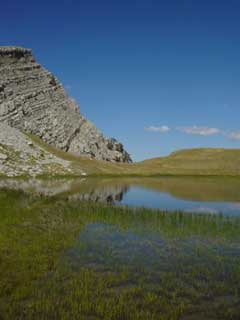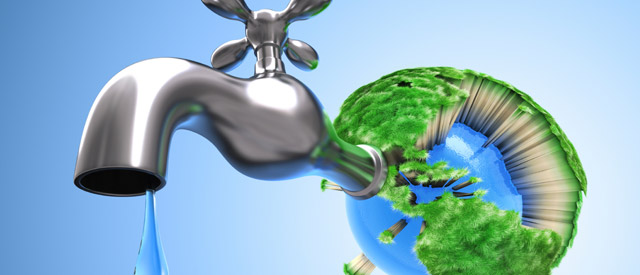- Regional water observation mechanism
- Regional Cooperation Assessment
- Water Quality Monitoring (JP)
- Water scarcity and drought (JP)
- Groundwater (JP)
- Waste water reuse (JP)
- Shared Water Resources Management (JP)
- Linking rural development and water management (JP)
- Waste management
- Water institutions
- Climate Change
- Floods
- Desalination
- Right to Water
- Irrigation
- Satellite data
- Water reports & data
- Hydrology
- Sanitation
- Gender and IWRM
- ArabWAYS
- Non-Revenue Water
- Virtual Water & Water Footprint
- WANA Water Panel
- Water Demand
- Water Governance
- Water Pricing
- Water accounts
- Water nexus Energy
- Geosciences
- Rural Management
 Water pricing in some EU countries
Water pricing in some EU countries
Water pricing
|
Member States |
Comments |
|
|
Incentives to use the water resources efficiently are
incorporated in the Flemish legislation by means of the taxes on groundwater
and in the legislation on drinking-water.
The taxation for a cubic meter groundwater is
differentiated according to the total pumped amount of groundwater, to the
aquifer in which the extraction well is situated and the existing pressure
head of the groundwater in the region.
The taxes depend as follows on the pumped volumes (Q):
Q is less then 500 m³/y: no tax
Q is 500 m³/y until 30.000 m³/y: tax = Q * 5 eurocent *
index
Q is more than 30.000 m³/y: tax = Q * index * (6,2 eurocent + 0,75 eurocent *
Qgwe/100.000)
Qgwe = total
volume pumped by all individual wells
=
sum of the Q of all individual wells * lambda
lambda values are differentiated depending on the aquifer
and the state of groundwater in the region.
Special prices are applied for drinking-water companies.
tax = Q * 7.5 eurocent * index
The index is defined on a yearly basis.
Every inhabitant gets every year a volume of 15 m³
drinking-water free of charge. Those who need more drinking-water have to pay
for the surplus.
The taxation for a cubic meter surface water is
differentiated according to the total amount of surface water abstracted and
to the sector of the water use.
0.058574 EUR/m3 for abstracted amounts less
than 1000000 m3
0.0339729 EUR/m3 for abstracted amounts between
1000000 and 9999999 m3
0.0170695 EUR/m3 for abstracted amounts between
10000000 and 99999999 m3
0.0032135 EUR/m3 for abstracted amounts above
10000000 m3
The abstraction of surface water for agricultural use is
charged with a fixed price. |
|
|
Water for domestic purposes is
mainly supplied through the Government Water Works by the Water Development
Department and is sold on a bulk basis to the
Water for irrigation purposes is
supplied through government and non-government schemes. Irrigation water in
government schemes is delivered directly to individual farmers (retail
supplies) and in isolated cases is also provided on a bulk basis to
irrigation divisions. Non-government schemes consist of small irrigation
schemes, which are managed by committees chaired by the District Officer. For
irrigation provision through the government schemes, charges are established
on a volumetric basis and are uniform for all schemes covering a high
proportion of the total financial cost.
Consultancy Services are currently in progress for the
design of a protocol of information related to the economic analysis process
and the implementation of the water pricing policies of the WFD. The protocol
of information will be able to support the future steps leading to the
implementation of the WFD and will enable future studies including the
assessment of the incentive properties of the current pricing policies for
all water services in |
|
|
The use of water pricing has
generally had a positive effect on both water use and loss in distribution
systems. Typical water price/m3 around 5 EURO, consisting of:
Water: 20%
Wastewater: 44%
Water tax: 14%
Wastewater tax: 2%
VAT: 20% |
|
|
Abstraction
charges are levied on all licensed abstractors. Charges reflect environmental
impacts – eg use, location,, seasonal
impacts etc. Tariffs therefore vary from around 1 pence to over £100 pounds.
(1.4 Euro cents to 140 Euros) per million litres |
|
|
In irrigation sector, practically all systems are
constructed and operated by individual farmers. Therefore, there is no common
pricing policy for irrigation. For other agricultural water (e.g. for
livestock and dairy farming) water supply pricing policy allies whenever the
water is obtained through and public piped water supply system.
The present pricing policy for water supplies in the full
cost recovery, i.e. the consumer tariff has to cover all costs (capital and
operation and maintenance). There are also many sparsely populated areas with
long pipelines, where water consumption reduction is not rational, because
certain amount of consumption is needed to secure good water quality.
For industries which obtain their water through public
piped water supply system, the water supply pricing policy applies. |
|
France |
For water pricing, there is no specific water pricing for
the dry season. We try to reflect as much as possible the cost of the water
and the associated services and also of environmental and resource costs with
the tariffs. The level of cost recovery in France is over 85 % for household
and industry. This cost recovery includes environmental charges (abstraction
and discharge) representing in average about 15% of the tariffs. We push all
sectors (households, industry, agriculture) to have tariffs based on
metering, in order to reflect water scarcity. For some cities where there are
a lot of tourists in summer, some specific tariffs are in place to take into
account these picks. For agriculture, the cost recovery can vary from 40% for
some collective systems (with dams and channel) to 100% for individual
systems. An incitation to metering of water for agriculture is given
throughout the tariffs. |
|
Germany |
In general pricing systems for cost effectivness in all
water related sectors |
|
Hungary |
Drinking water: Pricing policy
is depending on the ownership of the water works:
In case of local-government
owned works the price is determined by the assembly of the municipality,
while in case of state-owned works the decision on price is made by the Minister
of Environment and Water in agreement with the Finance Minister.
The price is varying on region
/ service provider and within a reach of HUF 72 and 278/m3 in the country
(2002). Price for sewage water collection and treatment varies between HUF 50
and 490/m3 in the same year. There is a state subsidy in the order of HUF 5
billion a year.
Industrial water: The
scattering of water prices for industrial plants and institutions is larger
than for the households and the average price is higher by 8%. This stimulates
companies to establish their own wells.
The Water Management Act
stipulates that water users shall pay a water resource charge (WRC) on the
quantity of water committed in their water license or used without a license,
or on the quantity actually consumed with respect to industrial users. The
equation applied:
WRC = V A m g,
Where:
A – base charge (determined
yearly)
m - factor of measurement = 1.0 if the water used is metered; = 2.0 if not,
g – factor depending on type of
use and character of resource, as well as of region (varying from 1.0 to
10.0)
A recent amendment of the Act
has erased the tariff system for agricultural use, both from surface and
groundwater. This measure unfortunately does not support the sustainable use
of water resources. |
|
|
Italian water pricing policy does not provide adequate
incentives for users to use water resources efficiently with the exception of
a tariff regulation for the civil sector.
A water pricing policy is provided by L.36/94, but the water
sector reform is not yet completed, so there are different prices on the
territory.
The drinking water average price is 0.55 €/mc
The average price of the sewage system is 0.13 €/mc
The Integrated Water Service average price is 1 €/mc
This water pricing, updated 2005, is calculated (IVA 10%) on an annual
average use of 197 mc.
Water pricing differs according to the areas of reference.
Central Italy is characterised by the highest price of the
Integrated Water Service.
Source: COVIRI 2006 from Cittadinanzattiva 2005 |
|
Malta |
Pricing policies not yet developed |
|
Netherlands |
The Dutch provinces charge for groundwater abstractions,
in order to cover the costs for groundwater management. On a national basis,
there is an environmental levy for groundwater abstractions. |
|
|
All water public services (urban, sanitation, irrigation,
navigation and others) apply taxes and tariffs (quantitative calculation).
However, these taxes and tariffs don’t cover all of the costs and need to be
redesigned to include adequate incentives for users to use water resources
efficiently. For water supply self-service the costs are fully supported.
Data is available for tariffs concerning water supply and
sanitation and for irrigation in public schemes, but collecting it for this
questionnaire would take some more time. There is however lack of data in
some cases and/or sectors (e.g. industry, private abstractions for
Agriculture). There are great disparities in tariffs for urban supply,
throughout the municipalities, but the Institute for Regulation (IRAR) is
establishing a reference model for tariff revision, considering principles of
cost recovery and equity. |
|
Slovak Rep |
In Slovak Republic are according to the Water law only the
real water withdrawals paid for, not the amounts stated in the Water
permission. The water for irrigation is not paid for. |
|
Slovenia |
Not yet |
|
|
The existing water pricing system in Spain includes
changes for the services provided by the River Basin Authorities (regulation
and transportation mainly) to irrigation associations, municipal services and
industrial users and these in turn
charge for this and their own distribution and treatment services to
the final users.
Urban tariffs to domestic and industrial users are mainly
3 block tariffs (in major cities there could be 5 blocks) to penalise
excessive usage; Industrial tariffs discriminate for bigger users both in the
fixed and variable charges.
The Water Law allows river basin authorities (RBAs) to
modulate charges to incentive water savings; increasingly irrigation
associations are establishing charges by volume and penalisation for
excessive use where water is scarce. |
| Released | 06/10/2008 |
|---|
 you are not logged in
you are not logged in





